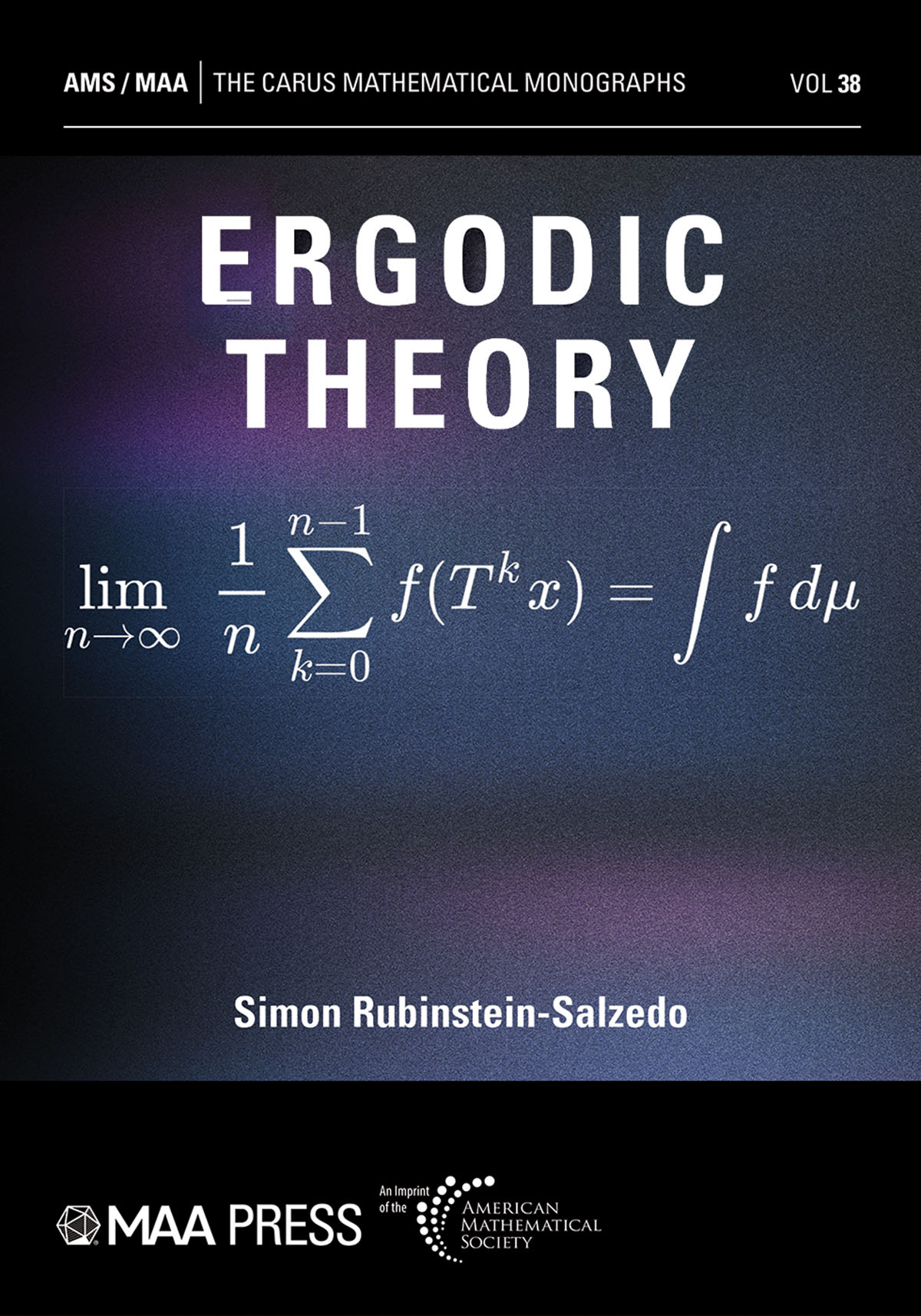
- Author: Simon Rubinstein-Salzedo
- Series: The Carus Mathematical Monographs
- Publisher: American Mathematical Society
- Publication Date: 04/22/2025
- Number of Pages: 209
- Format: Paperback
- Price: $79
- ISBN: 978-1-4704-7920-6
- Category: monograph
[Reviewed by Bill Satzer, on 06/13/2025]
Ergodic theory is a branch of dynamical systems theory that deals with measure-theoretic and
statistical properties of dynamical systems. Some of the big theorems in the subject give
conditions for when an average over time and an average over space for trajectories of a
dynamical system time agree. This book offers a solid introduction and explores some of the
applications. The tone of the book tends toward the conversational. Nonetheless, this can be
challenging material for newcomers, especially the analysis associated with measure theory.
It begins naturally with measure theory, followed by Lebesgue integration. Then the author discusses the relationship between Lebesgue and Riemann integrals, establishes the basic limit theorems for Lebesgue theory, and describes the standard $\bf L^p$ – spaces.
$$Having established these fundamental pieces, the text goes on to consider measure-preserving transformations, and then offers the first application – continued fractions and Lüroth series. What really gets the reader into classical ergodic theory follows; it’s the combination of Poincare’s recurrence theorem, Birkhoff’s ergodic theorem, and then invariant measures and mixing. Proofs of some of the more difficult results are omitted.
The author includes a few unusual topics toward the end of the book. These include additive combinatorics with its study of arithmetic progressions, Szemeredi’s theorem on the existence of arbitrarily long arithmetic progressions, and some results on polynomial recurrence.
While most treatments of ergodic theory offer at least some description of applications in physics – such as thermodynamics and the behavior of gases – there is nothing here. A reader might get the impression that there aren’t any significant applications outside mathematics.
The most unusual aspect of this book is its origin. The author wrote this after teaching a course at Euler Circle, a mathematics institute for advanced and exceptional students, mostly of high-school age. In this setting, the students already had studied some aspects of higher mathematics. The course as it was offered there was pretty intense, with two hours of lecture and two hours of problem solving per session. Ergodic theory for high-school students? That was my first reaction. Yet the book is a quite reasonable and readable introduction to the subject for prepared readers.
There are excellent problem sets, more than a few challenging, as well as some open questions. An excellent bibliography is provided. The author suggests that the book is accessible to readers with just experience in proof-based mathematics, but – practically speaking – a good introductory course in analysis is probably necessary.
Bill Satzer (bsatzer@gmail.com), now retired from 3M Company, spent most of his career as a mathematician working in industry on a variety of applications. He did his PhD work in dynamical systems and celestial mechanics.